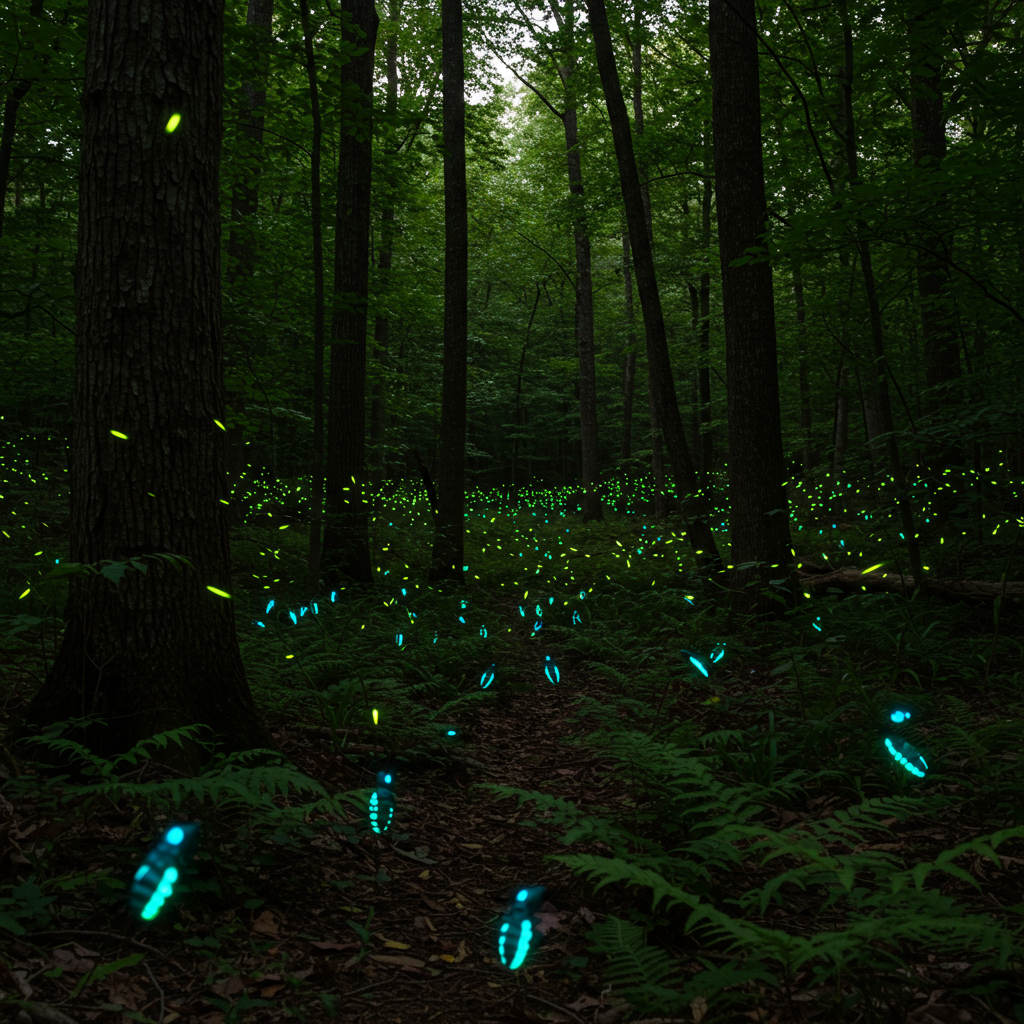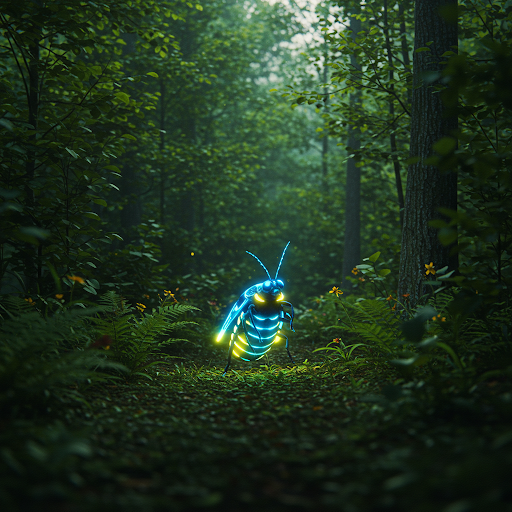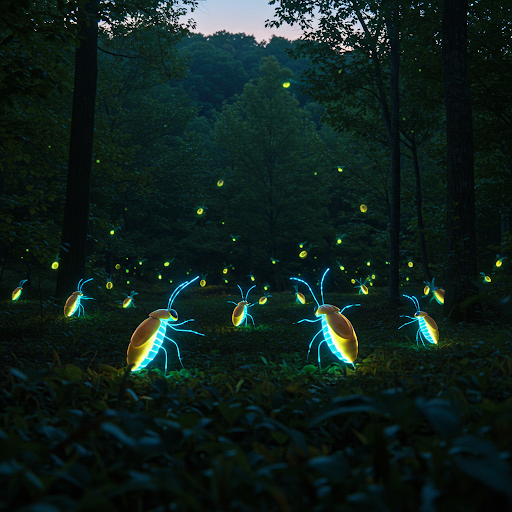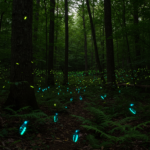
MORGANTOWN, WV – In a discovery that’s sure to light up the hearts (and backyards) of West Virginians, researchers at West Virginia A & M have announced the identification of a new species of firefly. This remarkable insect, distinguished by its vibrant blue and gold bioluminescence, has been dubbed the “Country Roads Firefly” ( Photinus viridis viarum rusticorum for the scientifically inclined).
The discovery was made during a routine bio-inventory of the Monongahela National Forest. Dr. Emily Carter, lead entomologist on the project, described the moment she and her team first encountered the glowing blue and gold insects. “We were absolutely stunned,” she recounted. “Fireflies are a common sight, but we’d never seen anything like this. The blue and gold light was so intense, it looked like tiny gems flitting through the trees.”
Unlike the more common yellowish-orange fireflies, the Country Roads Firefly emits a distinct, almost neon blue and gold glow. Scientists believe this unique coloration may be related to the insect’s diet or its specific habitat within the Appalachian ecosystem. “We’re still researching the exact reasons for the blue and gold light,” Dr. Carter explained, “but we suspect it could be related to the high concentration of certain minerals in the soil, or perhaps a specific type of bioluminescent bacteria they host.”

The discovery has sparked excitement among West Virginia residents. “It’s just another reason why West Virginia is such a special place,” said local resident, Earlene Simmons. “First the pepperoni rolls, now blue and gold fireflies! What’s next, coal that turns into diamonds?”
The Country Roads Firefly is expected to become a major tourist attraction, with organized “firefly viewing” expeditions already being planned in the Monongahela National Forest. Park officials are urging visitors to be respectful of the insects’ habitat and to avoid using bright lights that could disrupt their mating rituals.
“We want everyone to be able to enjoy the beauty of these amazing creatures,” said Forest Ranger, Dick Scarlett. “But it’s important to remember that they’re also a delicate part of the ecosystem. Let’s keep the ‘Country Roads’ bright, but also keep them wild.”

Researchers are now working to map the distribution of the Country Roads Firefly and to study its behavior and life cycle. They hope to learn more about the role this unique insect plays in the Appalachian ecosystem and to ensure its long-term survival. One thing is for sure: the discovery of the Country Roads Firefly has added a little extra magic to the West Virginia night, proving that even in the most familiar landscapes, there are still wonders waiting to be discovered.




